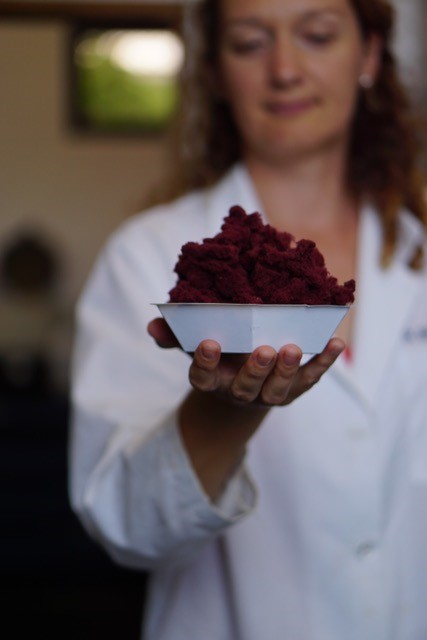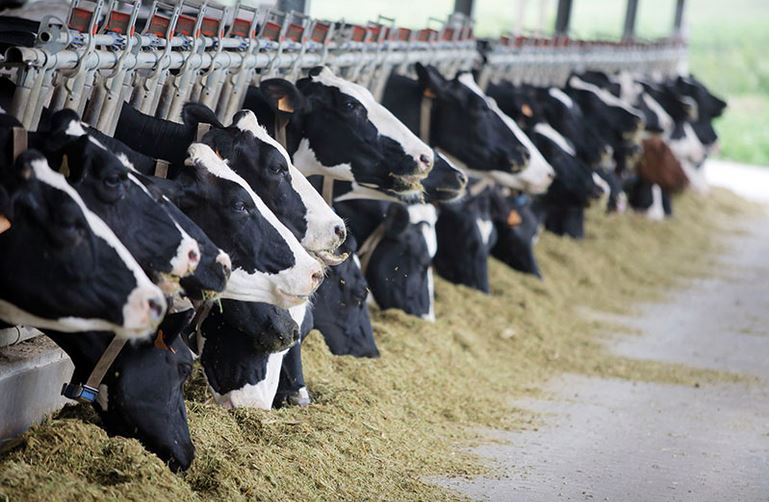



One step closer to carbon neutral cattle
New research shows that supplementing cattle diets with red seaweed reduces enteric methane emissions by 98 percent while improving productivity measures – without causing negative side-effects.A new feed trial published in the Journal of Cleaner Production finds that including Asparagopsis taxiformis (a species of red seaweed) in cattle diets leads to a dramatic reduction in enteric methane emissions. The researchers recorded a 98 percent reduction in enteric methane when high-grain cattle diets were supplemented with A taxiformis at 0.2 percent. Though this result is encouraging for environmental reasons, the researchers also noted that Asparagopsis supplementation significantly improves productivity measures without causing negative side-effects or decreasing meat quality.
Since this study’s design emulates intensive feedlot conditions, the researchers demonstrated that it was possible to essentially eliminate enteric methane in a greenhouse gas-intensive production system. The researchers estimated that if Asparagopsis was adopted by 20 percent of the beef and dairy markets, it could remove up to 15 percent of global enteric methane emissions per year.
Despite the study’s small sample size (20 steers), the researchers are building on previous in vitro and in vivo studies of Asparagopsis that showed dramatic reductions in enteric methane from dairy cattle and sheep. Though some questions remain over inclusion levels for forage-based diets, the researchers call for investment and commercial cultivation of A taxiformis. The seaweed is the most promising ruminant antimethanogenic agent to date – adopting it could help cattle production move past emissions targets and into carbon neutrality.
Background
Though all ruminant animals release methane when they break down food, producing too much of the gas usually indicates inefficient digestion and poor rumen function. For beef and dairy cattle, methane pulses can be problematic for both productivity and environmental reasons.
As global cattle production increases, there are growing concerns over methane emissions and its contribution to climate change. In response to this challenge, researchers are racing to develop innovative and sustainable feed ingredients that can mitigate or eliminate enteric methane.
Seaweed is an ideal commodity to include in animal feed. Multiple in vitro and in vivo trials have shown its efficacy in methane reduction, bioremediation and biofiltration. Previous studies have identified red seaweeds like Asparagopsis taxiformis as a powerful methane mitigator. Researchers have recorded dramatic methane reductions in A taxiformis feed trials with cattle and sheep, while also noting improvements in growth and lactation.
Based on the promising results in other feed trials, researchers at CSIRO wanted to explore the impact of Asparagopsis supplementation on beef cattle kept in feedlot conditions. They also wanted to determine an optimal inclusion level of Asparagopsis in high-grain cattle diets.

The study
The researchers hypothesised that including Asparagopsis in the total mixed feed ration in beef cattle would significantly decrease enteric methane emissions and improve productivity measures like daily weight gain and rumen efficiency. They also wanted to see what the ideal inclusion levels would be for cattle kept in intensive feedlot conditions for 90 days.
To test their hypothesis, the researchers used 20 brahman-angus steers and adapted them to a high-grain control feed without Asparagopsis. They took baseline measures for weight, rumen health and methane emissions, and then split the sample into four blocs of five steers.
The researchers then began the feed trial. They used freeze dried A taxiformis to maintain the active methane mitigating compound, bromoform. One group of cattle remained on the control feed, and the other three groups were fed diets with the seaweed added at 0.05 percent, 0.10 percent and 0.20 percent. Average daily weight gain, methane and hydrogen emissions and rumen fluid were tracked over the 90-day trial period.
Initial results
As a general trend, as the seaweed concentration increased, enteric methane production decreased. When compared to the control group, the cattle fed the lowest concentration of seaweed (0.05 percent of their feed ration) had a 9 percent reduction in in emissions. Cattle in the median group (0.10 percent) showed a 38 percent reduction. The most dramatic result came in the high concentration group – the researchers recorded a 98 percent reduction in enteric methane with 0.20 percent inclusion of Asparagopsis.
The team noted that cattle in the high concentration group showed the greatest average daily weight gain and feed conversion ratio when compared to the control group. None of the cattle in the feed trial displayed negative side effects after consuming the seaweed.
After the cattle were slaughtered, the researchers tested the meat quality of the carcasses. They also tested the meat, kidneys, fat and faeces for any seaweed residues or traces of bromoform.
All carcasses received an excellent meat quality score and no difference in grading was seen between treatment groups. Supplementing cattle feed with seaweed didn’t influence the flavour profile of the finished beef. No differences in customer satisfaction were observed between the groups. In addition, the researchers couldn’t detect any residues or bromoform in the steers’ kidneys, fat, faeces or carcasses.
Key conclusions
This trial demonstrates that producers don’t need to use high concentrations of Asparagopsis to gain unprecedented methane mitigation. The low dose also elicits production benefits like improved weight gain and rumen function, making a strong case for its adoption.
.jpg)
If red seaweed supplementation is widely adopted in intensive feedlot cattle, producers could see near-zero emissions of enteric methane, providing a dramatic climate benefit. Conservative adoption estimates are also promising. If 20 percent of the beef and dairy market across major OECD nations began using A taxiformis, it could remove up to 15 percent of global enteric methane emissions per year.
These results shouldn’t be viewed as a magic bullet – some unknowns remain on the seaweed side of the equation. To begin, researchers still need to determine the optimal inclusion level for Asparagopsis in cattle feed. Though this trial brings us closer to the mark, it needs to be replicated to ensure we reap the most benefit from supplementation. Researchers also need to devise methods to standardise bromoform content between samples of seaweed.
From a biological perspective, researchers need to track the trace elements that can accumulate in seaweeds and see if the dietary benefits of Asparagopsis last beyond 90 days. Longer feed trials that measured cumulative intake levels would show researchers if the positive effects of supplementation had limitations or were part of a wider trend.
Researchers also need to see if A taxiformis can be included in forage-based production systems. Existing evidence suggests that the differences in fibre content between grain and forage diets will influence the amount of seaweed needed to see dramatic methane reductions. It could be that Asparagopsis supplementation is more feasible in feedlot conditions and uneconomical for grazing cattle.
Despite these unknowns, the researchers call for investment in commercial A taxiformis cultivation. Its introduction to the market could revolutionise cattle production – making it more efficient and environmentally sound.
Read the full research paper in the Journal of Cleaner Production.



